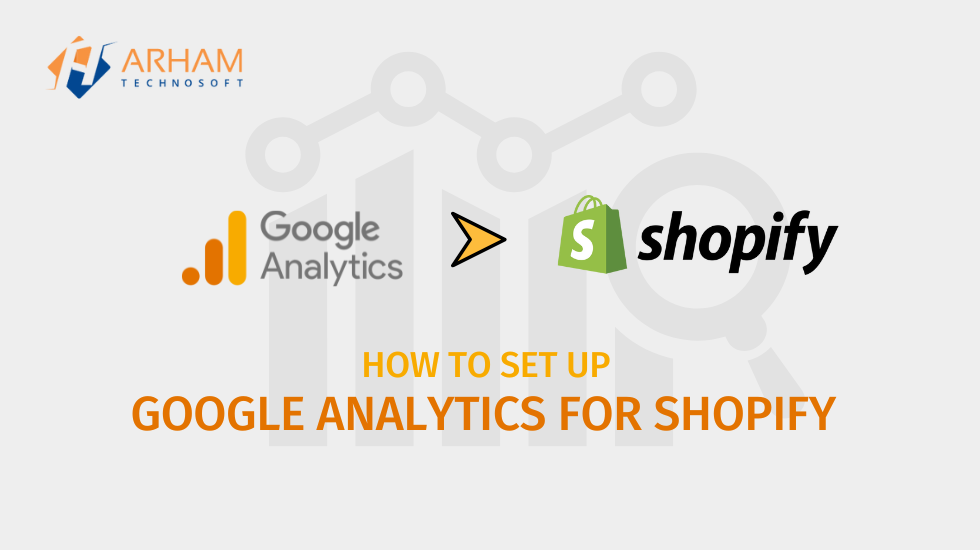If you have a Shopify store, you know how important it is to track your store’s performance. After all, how can you improve your store if you need to know what’s working and what’s not? One of the best ways to track your Shopify store’s performance is to connect it to Google Analytics. Google Analytics is a free tool that authorizes you to track all sorts of data about your website. There are many benefits to linking your Shopify store to Google Analytics.
For one, you’ll be able to track key data points regarding your store’s performance. This data can include the number of visitors, the average time spent on the site, and the number of page views. You can also use this data to enhance your store. For example, if you see that a particular page on your store is getting a lot of traffic but not converting visitors into customers, you can make changes to that page to try and improve its conversion rate.
This blog post will give you a step-by-step guide on connecting your Shopify store to Google Analytics. We’ll also touch on some of the benefits of doing so and what data you can track.
Why Connect Shopify To Google Analytics?
One of the great benefits of connecting Shopify to Google Analytics is that it gives you better insights into how customers interact with your store. It can help you track conversions and sales goals and determine which marketing campaigns drive traffic and conversions. Further, this data can be used to fine-tune your online marketing technique.
By connecting your Shopify store to Google Analytics, you can track website activity and how people interact with your products and services. With this data, you can optimize your marketing efforts accordingly, ensuring you reach as many potential customers as possible.
How To Connect Shopify To Google Analytics?
If you’re running a store on Shopify, chances are you’re interested in tracking your traffic and activity in Google Analytics. But connecting your account can be a little confusing and intimidating. That’s why we’ve put together this guide on how to connect Shopify to Google Analytics. After reading it, you’ll be able to connect your Shopify account in just a few simple steps.
After completing these steps, you’ll be able to track the following information about your store’s traffic:
– Visitors (unique visitors, pageviews, and average time on page)
– Location (where users are coming from, as well as which countries they’re visiting)
– Pages viewed (the number of pages viewed per visit)
– Purchase behavior (how many times users have made purchases)
You are linking your Shopify store to Google Analytics in various ways. The most straightforward way is to use the Google Analytics integration created into the Shopify admin panel. This option is available on all new or updated stores running Shopify 2.0 and above.
Once you have installed the analytics extension, you’ll be able to connect your store by going to Admin > Settings > Analytics and clicking Connect Accounts.
If you want to use something other than the Google Analytics integration in the admin panel, or if you’re using an older version of Shopify, other options are also available. One popular alternative is GA Insight, a paid service that allows users to connect their shop’s analytics account directly from their browser. Alternatively, you can use third-party tools like Segment or Mixpanel to track traffic data separately from your Shopify store.
Whatever method you choose, following these simple steps will help make connecting your shop’s analytics data a breeze!
The Benefits Of Connecting Shopify To Google Analytics?
Shopping on the Internet can be fun and rewarding, but knowing which products to buy can also take time and effort. That’s where Shopify comes in! It allows you to create a custom online store independent of any other store. It means you can see how your customers interact with your site and use this information to make informed decisions about your marketing and advertising efforts.
Connecting Shopify to Google Analytics is easy – you must add a few lines of code. Once connected, you’ll see how customers interact with your site and their browsing history. This data can help you make informed decisions about your marketing and advertising efforts so that you can convert more visitors into paying customers.
Google Analytics is a powerful tool that can be used to measure the success of your online store. By connecting Shopify with Google Analytics, you’ll be able to see how customers interact with your site and their browsing history. This data can help you make informed decisions about your marketing and advertising efforts so that you can convert more visitors into paying customers.
There are a few things that you’ll need to connect Shopify with Google Analytics. The first thing is an account on both platforms – Shopify and Google Analytics. You’ll also need a valid Google Analytics account number and a Shopify account number. Once these numbers have been obtained, all that’s left is to add the code necessary for connecting the two platforms.
Connecting Shopify to Google Analytics is an easy process that will allow you to understand better how your customers interact with your site. This information can then be used for making informed decisions about your marketing and advertising strategies.
What Data Can You Track With Shopify And Google Analytics?
One of the most important things you need to do when starting a business is deciding what data you’ll track. There are many options, and it can take time to know where to start. This post will help you understand what Shopify and Google Analytics offer regarding data and how each can be valuable for your business.
First, let’s take a look at e-commerce data. Shopify offers a comprehensive e-commerce platform that lets you track everything from sales figures to user behavior. This information can help you identify trends and make better decisions about your products and marketing campaigns. Additionally, it can provide insights into customer satisfaction levels, which can help ensure that your customers continue returning.
Next up is traffic data. Google Analytics offers powerful tracking tools for web traffic (including conversion rates). This information can help you determine which areas of your website are performing well (and which deserve more attention) and identify areas where users struggle with the process or interface. By understanding these issues early on, you can put measures in place to address them before they become major problems.
Sales data is also an important metric for success for businesses of all sizes. With store-level tracking enabled through Google Analytics 360°, it’s easy to see how individual products perform (and whether any seasonal changes might affect sales). Combined with other datasets such as Facebook Ads targeting or email marketing lists, this information provides an extremely comprehensive view of your business operations.
Ultimately, keeping track of different data types helps business owners make informed decisions about their strategies and activities. By using Shopify or Google Analytics alongside other sources of information (such as financial reports or customer surveys), you’ll be able to develop a comprehensive picture of your company’s performance over time.
How To Use Shopify And Google Analytics Data To Improve Your Business?
You know that data is key to success if you’re a business owner. And what better way to collect data than through your online shop? This section will show you how to connect your Shopify store to Google Analytics and start collecting data immediately.
Once connected, you’ll see all the important information about your customers – where they are located, what products they’ve bought, and much more. This valuable data can then be used to improve your business in many ways – from increasing sales to improving customer retention. So don’t wait any longer – get started today by following our simple steps!
Case Studies: See How Others Have Used Shopify And Google Analytics Together
Many businesses are finding that they can benefit from using Shopify and Google Analytics together. The combination of these two platforms has proven to be very powerful in increasing traffic and improving the overall customer experience. Here are a few case studies that illustrate this:
1) A restaurant saw an increase in traffic by 150% after combining Shopify with Google Analytics.
2) An e-commerce business saw a 300% increase in leads after integrating Google Analytics into their Shopify store.
3) A web development company saw a 500% increase in website visitors after integrating Google Analytics into their website.
The combination of Shopify and Google Analytics has proven to be a powerful tool for businesses of all sizes. The case studies listed above are just a few examples of how this partnership can benefit a business. If you’re looking to take your business to the next level, integrating these platforms is one way to do it.
Helpful Tips For Getting Started With Shopify And Google Analytics Integration
Google Analytics is a powerful tool that can help you track the effectiveness of your Shopify store. However, setting up the integration between the two can take time and effort. Here are seven tips to help you get started:
1. Make sure you have a Google Analytics account set up and ready to go before integrating it with your Shopify account.
2. Go to Settings > Checkout in your Shopify admin and scroll down to the Order Processing heading.
3. Add your unique Google Analytics tracking code snippet in the Additional Scripts text box.
4. Save your changes and wait for Google Analytics to collect data about your store’s traffic and conversions!
5. Now that you’ve integrated your accounts, take some time to explore all of the different reports available in Google Analytics.
6. There’s a lot of information available, so it can be helpful to decide what goals you want to track before diving too deep.
7. Fortunately, Shopify has put together a handy guide covering all the basics of using Google Analytics to track your store’s success.
To Wrap Things Up
Regardless of your business size, data should be at the forefront of all your decision-making. Connecting Shopify to Google Analytics is one way to ensure you have all the information you need to make informed decisions about your marketing and advertising efforts. What data will you track for your business?


